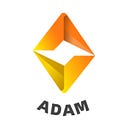ADAM Builds a DataFi Ecosystem. The Application Value of Data Assets on the Chain Explodes
The basic assumption of economics is that resources are limited, so people always try to find more resources for their own use. The same principle applies to on-chain data resources.
The huge value of data has long been generally recognized, but there are still many controversies about data assets on the chain. Although on-chain data assets face many challenges such as complex data, scattered data, on-chain data computing capabilities, lack of visual display, failure to maximize data value, and lack of relevant components or tool support for analysis and display, there is no doubt that on-chain data will become an increasingly important asset in the Web 3.0 era.
Driven by technologies such as mobile Internet and cloud computing, the data that people can obtain and control is increasingly abundant. We have entered a data era when data is created, acquired, and used. Gartner predicts that 85% of enterprises will be committed to improving their data capabilities in their industry by 2030. Thus, data has gradually become the fourth core competitiveness that is as important as talents, technology, and processes.
This article starts a preliminary discussion on DataFi, as well as the evaluation dimensions and methods of data assets. In the field of data supervision, it is recommended to adopt concepts and principles that are future-oriented, prudent and inclusive, and encourage innovation, so as to open up more development space for data asset-related industries.
As the value of data is gradually recognized, data assets are increasingly becoming an important issue. ADAM also continued to conduct more in-depth research after first mentioning the concept of DataFi. Research topics include: How is DataFi different from traditional assets? How is the value of DataFi reflected? What are the factors that affect the application of DataFi? Further, what are the possible valuation methods for DataFi? The asset-based development of data on the chain is an inevitable trend of the times. It is believed that after continuous exploration, DataFi will usher in blowout development of application scenarios.
DataFi — asset-based application of data on the chain
The data assets on the chain do not fully conform to the definitions of “assets” and “intangible assets” in the accounting standards. Therefore, the DataFi application has not yet been reflected in the project’s financial statements. However, discussions from an accounting perspective are still very important for the confirmation and measurement of data assets on the chain. The more important value orientation of this research topic is: how to recognize the value of on-chain data in a broad sense and its value contribution to the development of the industry.
Influencing factors
The factors affecting the value of “DataFi” are mainly considered from the two dimensions of income and risk of data assets on the chain.
The income of data assets on the chain depends on the quality and the application value of the data assets. The influencing factors of the quality value of data assets on the chain include authenticity, integrity, accuracy, data cost, security, etc. The influencing factors of the application value of data assets include scarcity, timeliness, multidimensionality, and scene economy.
The risk of data assets on the chain mainly comes from the legal restrictions and moral constraints of the business environment in which it is located, which has an impact on the value of data assets from quantitative changes to qualitative changes, and should be fully considered in the valuation of data assets on the chain. From the actual effect, the more restrictive regulations for data transactions on the chain, the compliance costs and security costs of both parties will naturally increase accordingly, although as a side effect, the data compliance security industries will have space for development. However, it may have a major impact on the development of the data asset market as a whole, which in turn affects the overall development of the digital economy. The value creation and risk control of data should be balanced with the concept of development and inclusiveness.
ADAM pays more attention to the governance of data on the chain while building the DataFi application. Data governance is oversight and strategy, and data management is execution and tactics. Data governance does not directly manage data. However, the purpose of data governance is to better manage data, and the purpose of data management is to make data play a better role and create higher value. Data governance is a mechanism used to coordinate the balance of all parties to ensure the stable and sustainable development of emerging DataFi applications.
About ADAM:
ADAM is a new generation of blockchain data service provider, with the function of batch data encrypted transmission, which can not only connect the world and the blockchain system, but also realize the barrier-free flow of ecological data information on chains such as ETH, BSC, OKexchain, and Solana. Meanwhile, ADAM has spawned powerful off-chain computing capabilities by building a global wide-area node network, enabling millisecond-level encrypted computing to realize real commercial-level “DataFi” applications, so that every role involved in data circulation can benefit from it. Different from Filecoin’s distributed storage network, ADAM aims to build the first data encrypted computing network in the Web3.0 era.
